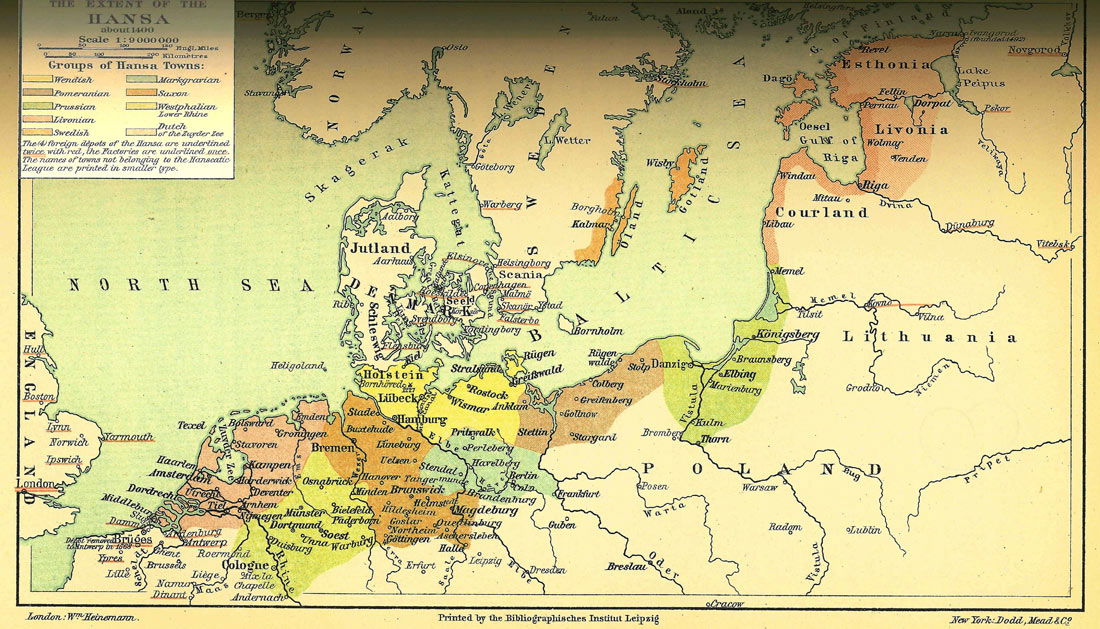The First Common Market? The Hanseatic League
In the 13th century a remarkable trading block was formed in northern Europe. Stephen Halliday explains how the Hanseatic League prospered for 300 years before the rise of the nation state led to its dissolution.
 The Hanseatic League, or Hansa, began as a northern European trading confederation in the middle of the 13th century. It continued for some 300 years. Its network of alliances grew to 170 cities and it protected its interests from interfering rulers and rival traders using a powerful fleet financed by its members. Given the limits of medieval communications, it developed a modest degree of political cohesion through its parliament, even if its increasingly diverse membership struggled to agree upon common policies.
The Hanseatic League, or Hansa, began as a northern European trading confederation in the middle of the 13th century. It continued for some 300 years. Its network of alliances grew to 170 cities and it protected its interests from interfering rulers and rival traders using a powerful fleet financed by its members. Given the limits of medieval communications, it developed a modest degree of political cohesion through its parliament, even if its increasingly diverse membership struggled to agree upon common policies.





